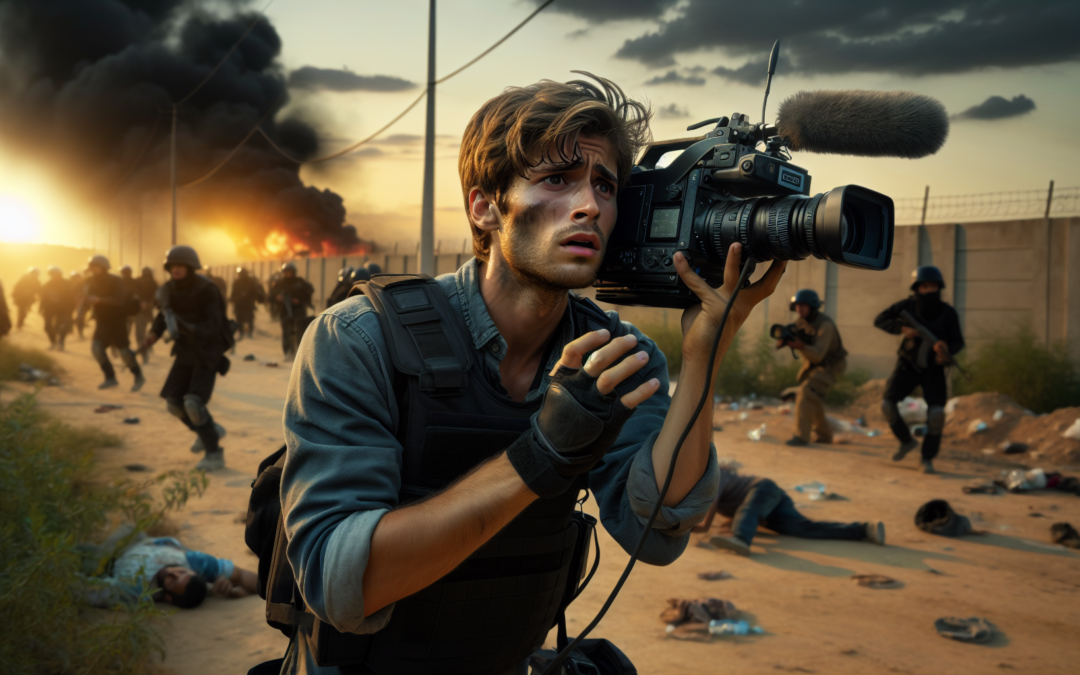The Thin Blue Line Meets the Lens: A Delicate Dance Amidst the Omnipresent Gaze
In the heart of towns scattered across America, a lesser-seen conflict unfurls — one etched not in gunfire or the cries of sirens, but in the undeniable friction between those who serve the public trust and those who purport to hold them accountable in the name of free expression. The stage is set whenever the paths of law enforcement and so-called “First Amendment auditors” intersect, creating a complex tapestry woven from threads of duty, scrutiny, and an unwavering conviction in freedom.
When the public thinks of police officers, they often envision the blue-clad guardians who rush into danger for the safety of others. However, this perspective is increasingly challenged by auditors whose mission is to highlight potential police overreach or abuse. These recordings, shared across social media with eagerness, have become modern-day arenas where every gesture, statement, and decision is dissected in real-time by an audience not constrained by immediate context or the nuances of the law.
Circling around city precincts or patrolling rural areas, officers find themselves confronted with the inescapable presence of First Amendment auditors who arrive not as allies but as unsanctioned referees in what should ostensibly remain a lawful space. And while one might argue that transparency in law enforcement should be lauded, the reality often unfolds as a perpetually tense standoff, one where law enforcement officials must constantly recalibrate their approach to engagement.
The New Face of Public Service
Understanding the world through the uniform, an officer’s duty today is undeniably more scrutinized than ever. Every interaction is pivotal, as even the most routine of calls can spiral into headline-capturing moments. With a primary mission to serve and protect, officers are thrust into an unenviable position — pressured not only by the responsibilities inherent in their profession but by an evolving public dialogue that questions their every motive and move.
Officers echo the sentiment that quite possibly, more than anyone, they welcome accountability. This structures the foundation of public trust within the communities they guard. Yet, the methodology and occasionally confrontational nature adopted by auditors amplify anxieties about the portrayal of law enforcement actions. Captured through camera lenses and mirrored through the distorted glass of public perception, seasoned officers describe this dynamic as akin to policing in a hall of mirrors where perception is often incongruent with reality.
While the professional landscape of yesterday was largely navigated without cameras as omnipresent witnesses, today, the lens mercilessly observes—awaiting the slip-up, eager to expose impartiality, warranted or not. From the clutch of an arrest to the lament of a scuffle, every tactile connection becomes fodder for discussion, dissected in heated debates played out across dining tables and digital forums nationwide.
Bridging the Divide
Despite the inherent tension, some enterprising officers strive to break through these barriers, intending to convert what might initially resemble distrust into an opportunity for outreach and education. Upon detecting the presence of an auditor, some officers take an active role in initiating respectful dialogue, acknowledging the auditor’s intent while underscoring the shared promise of a respectful and fair society upheld by consistent adherence to the law.
Moreover, many law enforcement agencies increasingly harness the strength of technology for reciprocal benefits. The deployment of body cameras, now ubiquitous among many police departments, shifts these confrontations into arenas of shared documentation. Conflicts of interest may be lessened through multi-angled evidence, bringing greater clarity if and when misunderstandings arise.
Holding the Line
At its core, the ongoing discourse between police officers and auditors encapsulates a broader narrative: that democracy, so dependent on checks and balances, remains a journey of impeccable complexity, subject to endless refinement. The individuals behind the badges encounter unprecedented challenges yet continue fulfilling roles as vibrant symbols of localized governance, serving communities even under invasive scrutiny.
As “The John Ligato Show” explores these interactions and scrutinizes both perspectives, it extends a call to action for mutual respect and understanding. For every clip circulated on social networks, there is often an untold story — one residing in thoughtful discretion, genuine empathy, and an unwavering commitment to the truths that bind rather than divide society.
An authentic and constructive mutual relationship resides not in extinguishing the spark of dissent or critique, but in transforming tense realities into harmonic dialogues. This vision enjoins not only officers present on the frontlines of both duty and media but the collective civic conscience that witnesses and evaluates these evolving roles. For law enforcement, capturing the hearts and trust of the constituent community transcends any single confrontation, mandating that officers remain stalwarts for justice, even as served to the backdrop of sometimes unwavering scrutiny.
Engage further by exploring content here and join the conversation on the complexities surrounding these interactions through The John Ligato Show’s Facebook page. Perhaps therein, within written and filmed testimonies, a space opens for collective understanding—a critical juncture where the value of officers standing firm, cameras lip-locked to each scene, is recognized not as resistance to freedom but its shield.

Recent Comments